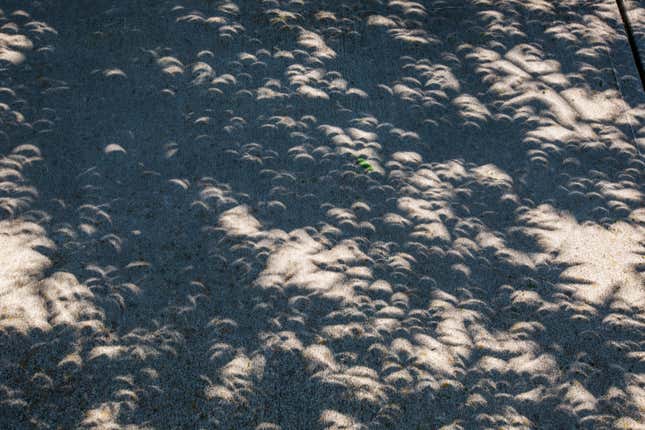Your phone’s camera is a lot like your eyes. They both view the world around you, take in massive amounts of light and are quite sensitive. Importantly, both your camera and your eyes can be severely damaged by being pointed straight at a solar eclipse. So maybe don’t do that on Saturday.
Tens of millions of Americans in the Western and Central portions of the country will bear witness to an annular solar eclipse on October 14th, but only a lucky few will be able to see the sensational ring of fire.
Gazing upon the solar even with unprotected eyes can cause “eclipse blindness,” or temporary to permanent eye damage. The same goes for your camera.
Advertisement
The National Aeronautics and Space Administration (NASA) issued advice for photographing the annular solar eclipse on Saturday in a safe way that increases your chances of getting the picture – and keeping your phone camera. You’ll want to follow these tips because you won’t get another chance until the end of next decade.
Advertisement

Advertisement
The first, and most important, tip is to use a special solar filter to protect your camera. Regular sunglasses are not strong enough to protect you or your camera, so you’ll want to grab a pair of eclipse glasses as well.
NASA also advises you to use a tripod to have your camera in place when the eclipse happens. This also avoids jiggling the camera by pressing the button, which can be aided by a shutter release timer.
Another piece of advice NASA gives is to look up, down and all around you! Yes, the ring of fire will be an amazing sight. However, the solar event creates incredible, long shadows on the landscape around you that also won’t be created for another 15 years. Better yet, if you stand near a tree, light filtering through tiny holes in its leaves will create mini eclipse replicas on the ground around you.

Advertisement
If you’re using a camera phone, make sure to practice adjusting the exposure on your camera before the event happens, as learning in real time may prove stressful. If using a DSLR, NASA recommends testing your camera on the uneclipsed sun beforehand, which should provide a similar exposure to the ring of fire.
You can do better than Trump did in 2017, when he looked directly into a solar eclipse with bare eyes, the one thing you’re not supposed to do. On Saturday, make sure to be prepared and be protected.
Services Marketplace – Listings, Bookings & Reviews